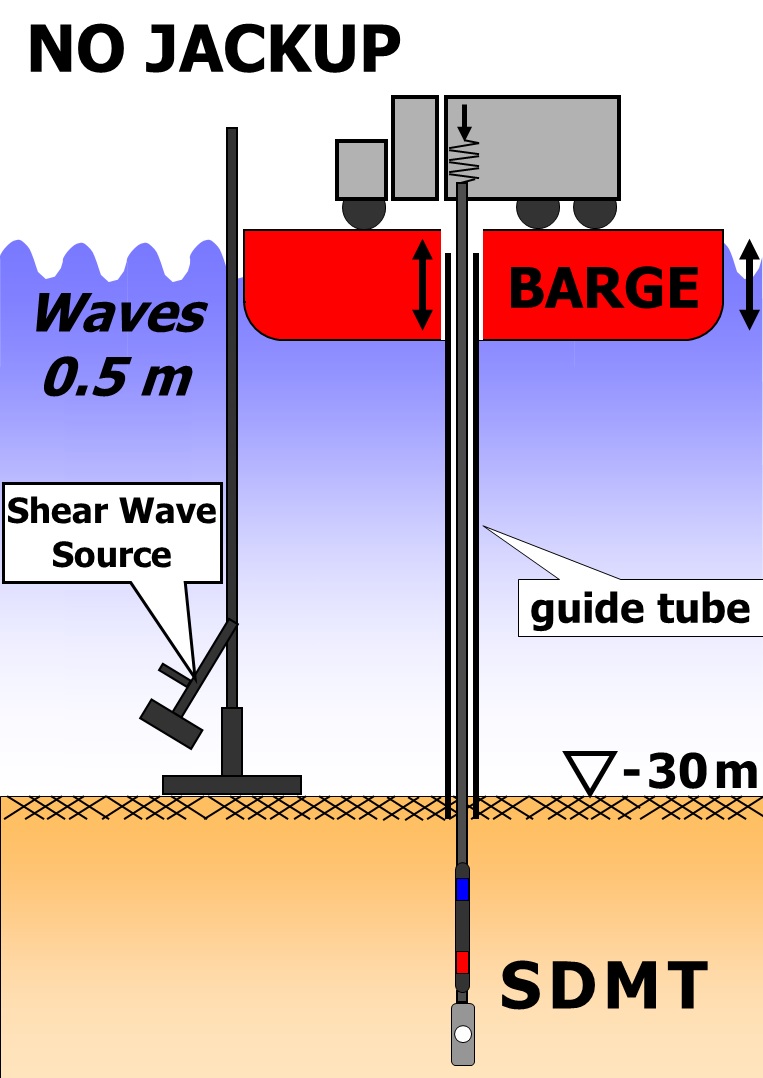DMT can be executed from a jackup. Since the working plane is fixed, DMT is executed in the same way as it is executed on land. A guide tube from the working plane, down to the the seafloor, contains the pushrods and prevents them from buckling.


This configuration can be used when the DMT has to be executed in the vicinity of the quay wall. The working plane is fixed and DMT is executed as in the previous figure.
In this configuration the DMT is executed from a floating barge (much less expensive than a jackup).
The working plane is no longer fixed, but moves according to the waves. The guide tube must be telescopic, to accommodate the oscillations.
When taking the DMT readings the top of the pushing rods must be disconnected from the pushing head. In this way the blade will not move during the measurements.
The barge must be horizontally anchored, to prevent lateral movement.
Details can be found in Lupi 2009.

With reference to the previous arrangement, this picture shows the penetrometer on the barge. Waves must be less than 0.5 m.
The following pictures illustrate the Seafloor DMT. It is composed of two parts. The lower part is a box filled with steel blocks to provide the reaction when pushing. The upper part is the pushing device.
6-7 pushrods are already charged vertically on top before lowering the machine. More rods can be added by keeping the string vertical, sustaining it with a buoy – or a trestle fixed to the top of the ballast.
The rods, and the blade, advance quasi-statically when electrical power is supplied to the pushing device. No additional advancing rig is needed.
